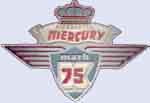Hi There Guys.
My first post so hopfully this goes ok!
Im trying to work out some compression figures for my outboard and how much meat to slice off my head, to raise compression. Am wondering if anyone can shed me some light on what the minimum squish clearance, i can safely run should be.?? . I have read in a book that per 175-250cc cylinder, the squish should be 0.8-1.0mm (30-40 thou") clearance. Is this correct?? can i go any more safely or are these figures true and around the ballpark???
This is with an undecked, standard block with dome top pistions
have done a soft solder test, cranking engnine over slowly by hand with correct head gasket, correct torque for head bolts, then measuring with micrometer?
any avice appreciated
Cheers


 Thanks:
Thanks:  Likes:
Likes: 


 Reply With Quote
Reply With Quote




Bookmarks